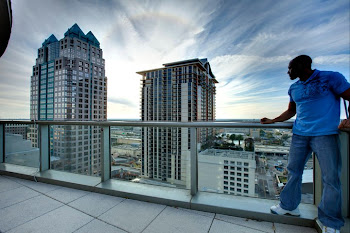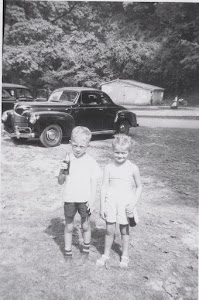 |
| Dr Bill Pellow at CHS Reunion 2012 |
Bill wrote:
""The site for cutting ice in Chapleau was on the Chapleau River west of the railroad tracks and half way between the Old Power house and the Chapleau Lumber mills. Very near where the Broomhead's farm property is located and where Dr. Frank docks his plane in the summer.
"A contract was drawn up and was let out for a horse and scoop to take the snow from the top of the ice and allow for a deep freeze . ' Blue ice" as it was called was preferable and was 'manufactured' in this manner.
"Ernie Rice was one of the perennial contractors for clearing ice, and with his team of horses for hauling the withdrawn cubed ice from the river to the CPR ice house opposite the Boston Cafe, Later another ice house was built at the east end of the CPR platform across the street from the homes of E. Lacroix and Bartley Kennan.
"Later, years later,horse drawn sleighs were replaced with trucks and snow plows. Once the ice depth was determined and measured to depth, a huge fowere ur foot circular saw cut a block pattern on the ice surface with lines running north and south and east and west and to a depth of about three feet. Heavy steel five foot chisels were used to break it clean from the mass.
"The blocks of ice were taken from the water by a gas driven endless belt and loaded onto the horse drawn sleighs for delivery. Raymond Sarto was put in charge of the ice saw. No one else wanted the job because it was a constant task to keep ice cut and to keep up to the sleighs on demand. There were few breaks in the work. Raymond went around all winter with his skin peeling from his face because of the severe frost bite he acquired behind that saw with the snow and ice chips constantly hammering his face. His entire body was covered in a thick film of 'ice dust'.
"Safety shields, saw guards and precautionary fencing to prevent drowning in the open frigid Chapleau River were not thought about then. If you happened to slip into the open water, you had to be retrieved within seconds or you were in for big problems with hypo thermia. Walking on blue ice next to the open watr was a constant concern. The splashed water froze instantly and it was always slippery.
" Imagine, diabolically opposite though. In those days no one spoke about wind chill factor. If it was fifty or sixty below on the thermometer it was just that cold outside and often we could talk about a chilling wind off the lake to boot. I have often listened to people from southern Ontario reiterate, 'But it was a dry cold'. Dry or wet it was damn cold. There was no protection from the cold and the wind on the lake. At least in town you had some protection from the building.
 |
| CHS Reunion 2012, Bill with friends from pioneer families |
"The sleighs filled with ice were drawn up to a loading ramp at the ice house. Each horse drawn sleigh could haul 20-24 blocks of ice as a full load. The ice house was a two storey wooden building painted CPR red, with tons of sawdust that was used within the walls for insulation and was shovelled on top of the ice to preserve it until needed for summer use to air condition the trains
"There were fifteen or twenty trains going through Chapleau every day. (in the summer) The regular trains were numbered from 1 to 8. The even numbers were headed east to Montreal and Toronto. The odd numbers were headed to Vancouver. There were sometimes four sections of a regular scheduled train . Passenger trains were always running on "block" i.e. at twenty minute intervals behind each other. Dangerous before block signal systems were installed.
"At the ice house loading platform the ice was tonged into a gas driven hoist that raised the huge blocks into the top levels of the ice house. A crew was inside the ice house and with ice tongs they wiggled the blocks across layers of frozen ice and snow to their finally resting place twelve or fifteen feet in each storey. When a section was completely filled the large thick insulated doors were shut and sealed. Ice is brittle and even with care and not much care was exhibited, there would be an accumulated pile of broken chipped ice around the hoist. This had to be kept clean and free from the mechanism.
"That was my regular job. It had its perks: when you got caught up and the hoist was clear you could slip across the street to the Boston Cafe and lean against the hot water radiators and let the heat jump inside your body for a short spell before you had to go out side and brave the elements and do it all over again. You could also see if the foreman was around and maybe looking for you. But the foremen were fathers as well as gang foremen and they had great compassion and understanding.
 |
| MJ Morris, Marg Fife, Bill, Vince Crichton |
"Saturday mornings freezing to death working on the ice gangs for the CPR made a body wonder about an inside job where you could "look out" and always be warm. It was a perpetual dream and the thought crossed my mind many a Saturday. Two pairs of pants, sometimes overalls three sweaters, Stanfield long underwear was standard apparel, flight boots and heavy woollen inserts over leather mitts, a beaver hat with lugs, ( my head at least was always sweating) and scarves just would not keep you warm.
"You couldn't put on more clothes even if you had them, because you had to navigate and work and there was a limit on wearing too much bulky clothing and being practical. Work was the salvation. So you constantly kept moving, and kicking your toes against something to remind you that your feet were down there and they were not turning to ice although it felt like that and maybe your feet could fall off if you didn't keep the circulation moving.
Moving prevented frost bite and severe chill. I am eighty years old and so often in winter the small of my back aches from what I must believe was a permanent chill in my back when I worked the ice gangs in my early teens. Ice gangs started at 7 a.m. and quit a 7 p.m. Dark starting to work and dark finishing. The pay was between 35- 50 cents an hour.
 |
| Bob Fife of CTV News with Bill |
You were warned that you were not to sit on the ice that you could get severe haemorrhoids. Truth or fiction, however most believed the story an it provided an incentive to stay on your feet and constantly keep moving. Maybe it was only a good bit of propaganda generated from the CPR to increase productivity and make the time motion studies practical. Now it is called work ethic and where have they gone?
Leo Ouimet of Peterborough wrote regarding Louis Fortin's memories from ice gang: "Thanks for this. Takes me back to the 60's when I worked in the dining cars one summer. I was on the spare board, so every trip was different; Thunder Bay, Halifax, etc. Some trips were spent peeling bushels of onions, others, washing dishes and scooping out pre-mixed mash potatoes. 18 hour days at $1.05 an hour. I still love trains."



No comments:
Post a Comment